Warning: strlen() expects parameter 1 to be string, array given in /home2/orbman69/public_html/wp-includes/functions.php on line 262
(Last Updated On: )
Date: January 8, 1981
Sighting Time:
Day/Night: Afternoon
Location: Trans-en-Provence, France
Urban or Rural: Rural
Hynek Classification: CE-II (Close Encounter II) Observation of an object in close proximity to the witness, where physical traces (impression, burn, medical effect, etc.) are left or (electrical effect, heat) are felt
Duration:
No. of Object(s): 3
Size of Object(s): about two meters [7 feet] It must have been about 1.5 meters [5 feet] high.
Distance to Object(s):
Shape of Object(s): round or oblong The ship had a border or type of brace around its circumference. Underneath the brace, as it took off, I saw two kinds of round pieces which could have been landing gear or feet. There were also two circles which looked like trap doors. The two feet, or landing gear, extended about 20 centimeters [8 inches] beneath the body of the whole ship.”
Color of Object(s): color of lead.
Number of Witnesses:
Source: ISSO Source
Summary: On the afternoon of January 8, 1981, a strange craft landed on a farm near the village of Trans-en-Provence in the Var region in southeastern France. Physical traces left on the ground were collected by the Gendarmerie within 24 hours and later analyzed in several French government laboratories. Extensive evidence of anomalous activity was detected.)
Full Report
Above – Artist’s impression of the landed craft. (source: Lumieres Dans La Nuit)
On the afternoon of January 8, 1981, a strange craft landed on a farm near the village of Trans-en-Provence in the Var region in southeastern France. Physical traces left on the ground were collected by the Gendarmerie within 24 hours and later analyzed in several French government laboratories. Extensive evidence of anomalous activity was detected.
The case was investigated by the Groupe d’Etudes des Phénomènes Aérospatiaux Non-identifiés (GEPAN), or Unidentified Aerospace Phenomena Study Group, established in 1977 within the National Center for Space Studies (CNES) in Toulouse, the French counterpart of NASA. (The functions of GEPAN were reorganized in 1988 into the Service d’Expertise des Phénomènes de Rentrées Atmosphériques or SEPRA). The primary investigator was Jean-Jacques Velasco, the current head of SEPRA.
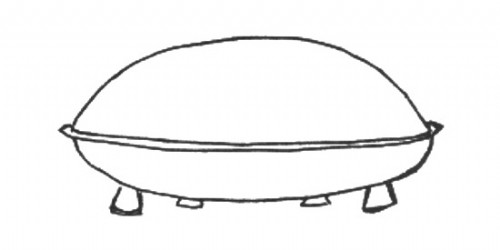
Drawing of the “device” by the witness.
The witness was the farmer Renato Nicolai, 55, on whose property the UFO landed and then took-off almost immediately. Thinking that it was a military experimental device, Nicolai notified the local gendarmes on the following day. The gendarmes interviewed Nicolai and collected soil and plant samples from the landing site within 24 hours of the occurrence, notifying GEPAN on January 12 as part of a cooperation agreement for UFO investigation between the two agencies. Further collection of samples and measurements of the site were undertaken by the GEPAN team, and the samples were thoroughly analyzed by several government laboratories.
The first detailed report on the case was published by GEPAN in 1983 in its “Technical Note No. 16, Inquiry 81/01, Analysis of a Trace.” Nicolai’s testimony to the police was simple and straightforward: “My attention was drawn to a small noise, a kind of little whistling. I turned around and I saw, in the air, a ship which was just about the height of a pine tree at the edge of my property. This ship was not turning but was descending toward the ground. I only heard a slight whistling. I saw no flames, neither underneath or around the ship.
“While the ship was continuing to descend, I went closer to it, heading toward a little cabin. I was able to see very well above the roof. From there I saw the ship standing on the ground.
“At that moment, the ship began to emit another whistling, a constant, consistent whistling. Then it took off and once it was at the height of the trees, it took off rapidly… toward the northeast. As the ship began to lift off, I saw beneath it four openings from which neither smoke nor flames were emitting. The ship picked up a little dust when it left the ground.
“I was at that time about 30 meters [100 feet] from the landing site. I thereafter walked towards the spot and I noticed a circle about two meters [7 feet] in diameter. At certain spots on the curve of the circle, there were tracks (or traces).
“The ship was in the form of two saucers upside down, one against the other. It must have been about 1.5 meters [5 feet] high. It was the color of lead. The ship had a border or type of brace around its circumference. Underneath the brace, as it took off, I saw two kinds of round pieces which could have been landing gear or feet. There were also two circles which looked like trap doors. The two feet, or landing gear, extended about 20 centimeters [8 inches] beneath the body of the whole ship.”
The samples of soil and wild alfalfa collected from the landing site, as well as the control samples from varying distances from the epicenter, were subjected to a number of analyses: physico-chemical analysis at the SNEAP laboratory, electronic diffraction studies at Toulouse University, mass spectrometry by ion bombardment at the University of Metz, and biochemical analysis of the vegetable samples at the National Institute of Agronomy Research (INRA), among others.
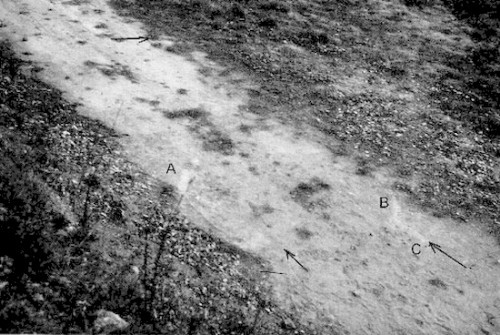
One of the landing marks at the site. (Photo by Jean-Jacques Velasco of GEPAN.)
The Trans-en-Provence case is very likely the most thoroughly scientifically documented CE- II (Close Encounter of the Second Kind) ever investigated. Some of the scientific findings included: “Traces were still perceptible 40 days after the event.
“There was a strong mechanical pressure forced (probably the result of a heavy weight) on the surface.
“A thermatic heating of the soil, perhaps consecutive to or immediately following the shock, the value of which did not exceed 600 degrees.
“The chlorophyll pigment in the leaf samples was weakened from 30 to 50 percent… The young leaves withstood the most serious losses, evolving toward the content and composition more characteristic of old leaves.”
“The action of nuclear irradiation does not seem to be analogous with the energy source implied with the observed phenomenon; on the other hand, a specific intensification of the transformation of chlorophyll… could be tied to the action of a type of electric energy field.
“On the biochemical level, the analysis was made on the entirety of the factors of photosynthesis, lipids, sugars and amino acids. There were many differences between those samples further from the spot of the landing and those that were closer to the spot.
“It was possible to qualitatively show the occurrence of an important event which brought with it deformations of the terrain caused by mass, mechanics, a heating effect, and perhaps certain transformations and deposits of trace minerals.
“We cannot give a precise and unique interpretation to this remarkable combination of results. We can state that there is, nonetheless, another confirmation of a very significant event which happened on this spot.”
Most of the puzzling biochemical mutations were discovered by Michel Bounias of INRA. Describing the young leaves to a journalist from France-Soir magazine, Bounias stated in 1983 that: “From an anatomical and physiological point, they [leaves] had all the characteristics of their age, but they presented the biochemical characteristics of leaves of an advanced age: old leaves! And that doesn’t resemble anything that we know on our planet.”
In a technical report published in the Journal of Scientific Exploration, Bounias concluded that: “It was not the aim of the author to identify the exact nature of the phenomenon observed on the 8th of January 1981 at Trans-en-Provence. But it can reasonably be concluded that something unusual did occur that might be consistent, for instance, with an electromagnetic source of stress. The most striking coincidence is that at the same time, French physicist J.P. Petit was plotting the equations that led, a few years later (Petit, 1986), to the evidence that flying objects could be propelled at very high speeds without turbulence nor shock waves using the magnetohydrodynamic effects of Laplace force action!”
Out of a total of 2,500 reports collected officially in France since 1977 and investigated by GEPAN, this case and three other ground trace incidents (where strange ground traces were left after alleged UFO landings) continue to puzzle the original investigator, Jean-Jacques Velasco. At a meeting of the Society for Scientific Exploration (SSE) in Glasgow in 1994, Velasco summarized the “four noteworthy cases” with “effects observed on vegetation”:
“These cases have all been the subject of enquiries by the police, then GEPAN or SEPRA. In each of these situations, a UAP [Unidentified Aerospace Phenomena] was observed in direct relation in a zone perturbed by the phenomenon.
“1. ‘CHRISTELLE’ case of 27/11/1979: Persistence of flattened grass several days after the observation. The samples taken and analyzed by a plant biology laboratory at Toulouse University did not give unequivocal evidence of chemical or biological disturbance of the samples taken from the marked area relative to controls. A study of the mechanical properties of grass tissue subjected to strong mechanical pressure showed that the duration is a more important factor than the mass.
“2. ‘TRANS EN PROVENCE’ case of 8/01/81: Apparition of a circular print in a crown shape after observation of a metallic object resting on the ground. The vegetation, a kind of wild alfalfa, showed withering of the dried leaves in the central part of the print. The analyses revealed damage of a specific kind affecting the functional relationships of the photosynthetic system.
“3. ‘AMARANTE’ case of 21/08/82: Severe drying of the stems and leaves on a bush (amaranth), punctuated by the appearance of raised blades of grass before the phenomenon disappeared. Biochemical analyses revealed that no reported outside agent could be the cause of such effects. Only a corona effect due to powerful electromagnetic fields could partially explain the observations.
“4. ‘JOE LE TAXI’ case of 7/09/87: Leaf damage on a tree (birch) and functional disturbance of the photosynthetic system after an intense light and sound phenomenon had been observed. This case demonstrated the importance of good sample collection and preservation for biochemical analysis.”
Of these four cases, Trans-en-Provence still remains the best documented one. Velasco concluded that, after years of investigations: “The laboratory conclusion that seems to best cover the effects observed and analyzed is that of a powerful emission of electromagnetic fields, pulsed or not, in the microwave frequency range.”
SEPRA’s latest thrust in the investigation has centered on “experimentally reproducing in the laboratory, continuous and pulsed emissions of microwave fields at various powers and frequencies so as to verify biochemical effects on plants.” While the studies are still preliminary, Velasco concluded his SSE presentation with the following statement: “However these initial studies carried out to validate the hypothesis of microwave action on the biological activity of plants in relation with UAPs need to be extended if we are to understand the mechanisms involved at molecular scale. Similarly, an investigation of the frequency range, the power and the exposure time would be useful to confirm the hypothesis of microwaves combined with other fields of electromagnetic forces coming into play in the propulsion of UAPs.”
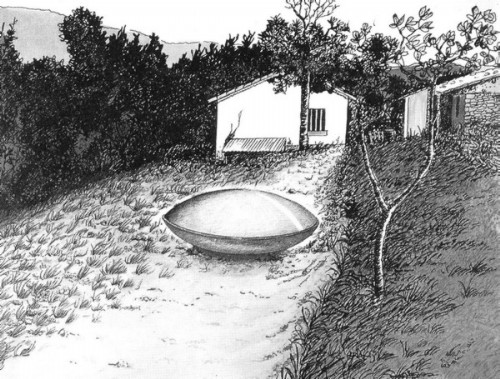
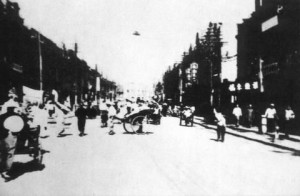
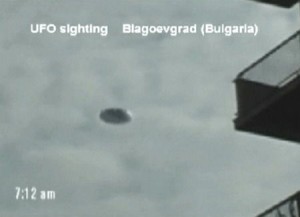
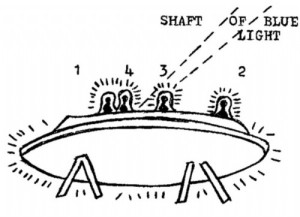
Related Reports
Warning: strlen() expects parameter 1 to be string, array given in /home2/orbman69/public_html/wp-includes/functions.php on line 262
1 min read
0216: Cannes, France Sighting
Warning: strlen() expects parameter 1 to be string, array given in /home2/orbman69/public_html/wp-includes/functions.php on line 262
2 min read
0640: Faremoutiers-en-Brie, France Sighting
Warning: strlen() expects parameter 1 to be string, array given in /home2/orbman69/public_html/wp-includes/functions.php on line 262
5 min read
0815: Lyons France Sighting